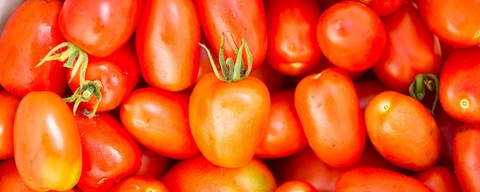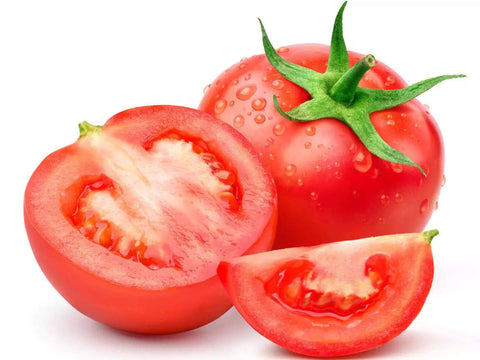Limited garden space or unsuitable soil shouldn't stop you from enjoying homegrown tomatoes. Container gardening is a fantastic solution, allowing you to cultivate tomatoes on your deck, patio, or even window sill. Success in container tomato gardening hinges on three key aspects: choosing the right tomato variety, proper planting techniques, and consistent care. Pay attention to these elements, and you'll soon find yourself in tomato heaven.

Choosing the Right Tomato Variety
Tomatoes are warm-season, slow-growing vegetables that take around 150 days to mature from seed. Hence, they are typically started indoors in well-established nurseries, at least six to eight weeks before the last spring frost. If starting from seeds, ensure they are sown indoors a few weeks before the last frost date in spring.
Planting Tomatoes in Containers
When planting tomatoes, add some soil to the bottom of the pot, then place the tomato plant in it. Bury the stem beneath the lowest set of leaves, promoting healthier growth as new roots develop along the buried portion. Once the plant is positioned at the proper level, fill the container with potting soil, gently tapping it down as you go. The soil should rise about an inch below the pot's rim to leave space for watering. After potting, give the tomato plant a good watering and secure it in place.

Two additional considerations are support and cover. Even compact tomato varieties benefit from some support. Tomato cages, stakes, or homemade cages suitable for containers are excellent choices. While not as crucial in containers as in garden beds, mulching is still a good idea—it prevents weed growth and helps retain moisture, reducing the need for frequent watering. Good mulch options include pebbles, bark mulch, and straw.
Tomato Care
Light: Tomatoes need full sunlight all day to produce optimally. A minimum of six hours of direct sunlight is considered essential.
Soil: Any high-quality organic container soil is suitable for tomatoes. Avoid using soil directly from the garden, as it is heavy and compacts over time.
Water: Tomatoes require consistent watering, so be sure to water regularly. A good rule of thumb is to check the top two inches of soil; if it's dry, it's time to water.
Temperature and Humidity: Originating from Central and South America, tomatoes are heat-loving but sensitive to excessive heat without adequate moisture. Early excessive heat can hinder flowering, but mature plants thrive in temperatures between 80°F to 90°F. Choose cold-tolerant varieties if night temperatures drop below 55°F.
Fertilizer: Container-grown tomatoes are heavy feeders, and nutrients can be washed out with each watering. Regular feeding with fish emulsion or seaweed extract at half-strength every two weeks is beneficial.
Container-Friendly Tomato Varieties

While determinate tomatoes are generally favorites for home gardening, they are often sprawling vines, making them less ideal for containers. Compact, bushy types are better suited for containers. Some excellent choices include:
Patio Princess: Reaching 2 feet in height, producing a continuous supply of 2.5-inch tomatoes.
Bushsteak: A compact plant, growing to 20 to 24 inches, yielding large and juicy tomatoes.
Sweetheart of the Patio: Produces delicious 1-inch tomatoes in abundance.
Marglobe: A vining plant suitable for larger containers, maturing in 73 days.
Baxter's Bush Cherry: Ideal for containers, producing many fruits without staking or caging.
Sweet Baby Girl: A determinate type, not growing too tall, perfect for containers.
Gardener's Delight: A delightful heirloom cherry tomato with rich, sweet flavor.
Balcony: A compact plant, perfect for small containers, producing an astonishing quantity of 2 to 2.5-inch red tomatoes.
Stupice: Known for early 2 to 3-inch tomatoes.
Tumbling Tom Yellow: Ideal for hanging baskets, railing boxes, and containers, producing many 1 to 2-inch yellow tomatoes.
How to Harvest Tomatoes

Contrary to some beliefs, tomatoes don't need to be picked early and ripened on a shelf. They are most edible when their color reaches deep red (or yellow for certain varieties). Immature or early-ripening fruits will continue to ripen if placed in sunlight or in a paper bag with apples.
Uncertain tomatoes will keep producing new fruits as long as you keep picking them. For larger tomatoes, pinching back the growing tips to remove flowers helps channel energy into remaining flowers and fruits.
How to Grow Tomatoes from Seeds
As tomatoes are warm-season plants requiring an extended time to mature, they are usually started indoors at least six to eight weeks before the last spring frost. This might be the only way to grow certain heirloom varieties where nursery plants are unavailable.
In a cell tray filled with potting soil, sow seeds 1/2 inch deep. Place the tray in a well-ventilated, sunny spot with temperatures at least 70°F. Experienced gardeners often use a heating mat and a small fan to provide ideal conditions. Seeds should germinate in about five days. Keep the seedlings warm and moist until they reach 2 to 3 inches in height, at which point they can be transplanted into larger containers. Continue growing in bright, sunny conditions until the weather warms up, and all danger of frost has passed.

To help with the transition outdoors, "harden" the seedlings by gradually exposing them to outdoor conditions, increasing their outdoor time over seven to ten days and bringing them inside at night. Tomatoes are sensitive to cold, so acclimating them to outdoor conditions gradually helps avoid shock.
Common Pests and Diseases
Container-grown tomatoes are generally less prone to issues than those planted in the ground, but they can still be susceptible to common diseases.
Blossom End Rot: Ugly black patches on the fruit can occur when soil lacks calcium, exacerbated by uneven watering. Some gardeners mix crushed eggshells or bone meal into container soil to prevent this.
Dropping Flowers: If flowers fall off before fruit sets, it's often due to temperature fluctuations. Unfortunately, there's little you can do for dropped flowers, but keeping the plant robust minimizes it.
Cracking Fruits: Fruits crack when tomatoes absorb water too quickly, often in hot, humid weather. While not a significant concern, as tomatoes are still edible, maintaining consistent moisture can help.
Fungal Leaf Spots: Reduce these issues by keeping leaves as dry as possible.
Cutworms: Sometimes cutworms can sever plants near the ground. Protect the stem's base with aluminum foil collars.
Enjoy your bountiful container-grown tomatoes!









